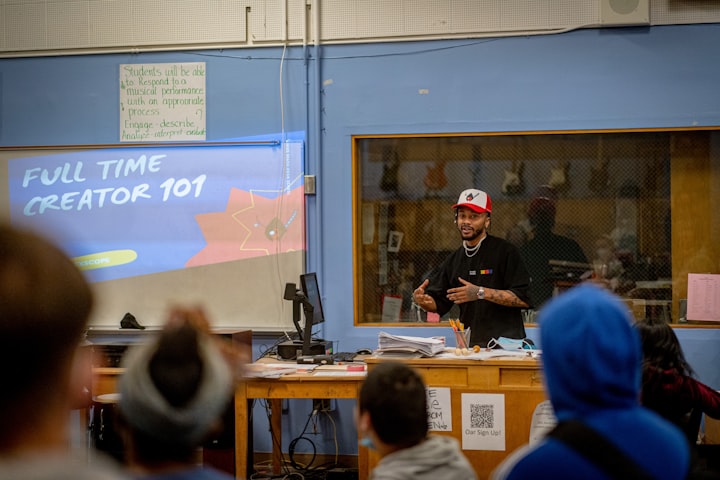Beyond GPT-4: 5 AI Breakthroughs You Should Know About

It's true that ChatGPT and its successor, GPT-4, have been generating a lot of excitement and popularity lately; however, it's also important to remember that many other breakthroughs deserve our attention.
By exploring various AI breakthroughs, we can gain a richer appreciation for the many applications of this powerful technology and the exciting possibilities that lie ahead. From natural language processing to computer vision, these breakthroughs have pushed the boundaries of what AI can achieve.
Here are the most important breakthroughs in AI in recent years:
NLP
Natural language processing (NLP) is a crucial aspect of artificial intelligence that involves using machine and linguistic knowledge to teach computers how to understand text and spoken words similarly to humans.
While this might seem easy, NLP faces various challenges due to the complexity of human language.
Firstly, there is significant variation in language from speaker to speaker. Accents, dialects, and different linguistic nuances pose a considerable challenge for computers to comprehend spoken words.
Additionally, people often make mistakes when speaking or incorporate slang and jargon, making it difficult for computers to interpret the intended meaning.
Another challenge is the presence of irony and sarcasm in human communication, which is often signaled by facial expressions or changes in tone.
Moreover, words with multiple meanings add another layer of complexity, requiring computers to guess the speaker's intention based on context, body language, and tone of voice.
Computers, lacking these cues, need help understanding the speaker's meaning entirely.
To overcome these challenges, NLP scientists use different methods to enhance computers understanding of human speech:
- Speech recognition: Converting spoken words into text is the initial step for a computer to understand human speech. However, this involves handling mispronunciations, mumblings, and diverse accents.
- Grammatical tagging: Identifying the part of speech (verb, noun, adjective) helps computers better understand human speech, mainly when words are used in specific grammatical structures.
- Named entity recognition: Teaching computers to identify specific words, such as countries or places' names, helps avoid confusion and recognize patterns in speech.
- Sentiment analysis: It involves understanding human emotions, irony, and sarcasm. Providing computers with examples helps improve their accuracy in analyzing the sentiment behind a sentence.
One prevalent tool of NLP is virtual assistants like Siri and Alexa. Major companies like Apple, Amazon, and Google have developed these personal assistants, showcasing the significant advancements in natural language processing. The virtual assistants are designed to understand and respond to human speech, making daily life easier.
Healthcare Diagnostics and Treatment
The AI healthcare industry, valued at $11 billion in 2021, is expected to skyrocket to $187 billion by 2030, according to Statista.
Integrating AI into healthcare has the potential to bring about significant improvements in disease diagnosis, treatment selection, and clinical laboratory testing. AI tools can analyze vast amounts of data, spotting patterns beyond what humans can achieve, which leads to enhanced accuracy, cost savings, and time efficiency while minimizing human errors.
The impact of AI goes beyond just numbers. It can revolutionize personalized medicine, ensuring treatments are tailor-made for individuals.
Additionally, AI plays a role in optimizing medication dosages, improving population health management, establishing guidelines, and even providing virtual health assistants. Mental health care can benefit from AI support, and patients can enjoy better education about their health. AI can strengthen the trust between patients and physicians.
In summary, the growth of AI in healthcare promises a future where technology not only makes processes more efficient but also positively impacts how we approach and manage our health.
Generative AI
Generative AI models use neural networks to find patterns in existing data, creating new and original content. They've made breakthroughs by using different learning approaches, like unsupervised or semi-supervised learning, making it easier to use large amounts of unlabeled data to create foundation models. These foundation models can serve as a base for AI systems that perform multiple tasks.
Examples of foundation models include GPT-3 and Stable Diffusion. GPT-3, used in applications like ChatGPT, helps generate essays based on short text requests. Stable Diffusion lets users create lifelike images from text input.
- Applications of Generative AI
Generative AI streamlines workflows across various fields. It can take inputs like text, image, audio, video, and code, generating new content in any form.
- Language:
Text-based generative models, like Large Language Models (LLMs), handle tasks such as essay generation, code development, translation, and understanding genetic sequences.
- Audio:
Generative AI in audio can create songs and audio snippets from text inputs, recognize objects in videos, and generate corresponding sounds.
- Visual:
In the visual realm, generative AI crafts 3D images, avatars, videos, graphs, and other illustrations. It's versatile, producing images with different styles, editing visuals, creating 3D models for games, designing logos, and more.
- Synthetic Data:
Generative AI produces synthetic data for AI model training when real data is limited. This process reduces labeling costs by generating additional training data or learning an internal representation of the data.
Impact of Generative AI on Different Industries
- Transportation:
Generative AI is used in the automotive industry to create 3D worlds for simulations and autonomous vehicle training, enhancing safety and efficiency.
- Natural Sciences:
In healthcare, generative models assist medical research and automate tasks like medical coding and imaging. In weather science, they also help with accurate forecasting and disaster prediction.
- Entertainment:
Generative AI is a boon for the entertainment industry, aiding in video game creation, film production, animation, world-building, and virtual reality.
Generative AI's impact is extensive, transforming fields like transportation, natural sciences, and entertainment. Its applications continue to grow, making processes more efficient and creative.
Self-driving cars
In 2020, companies like Waymo introduced self-driving taxis through Waymo One, letting customers hail rides without drivers. Alibaba's AutoX launched fully automated cars in Shenzhen, and these cars didn't even need safety drivers.
The idea of cars driving themselves isn't familiar; the first self-driving car, the Automatic Land Vehicle in Neural Network (ALVINN), was invented in 1989. ALVINN used neural networks to navigate and drive, but it faced challenges due to slow processing and limited data.
Self-driving cars are like intelligent decision-makers. They use sensors like cameras, LiDAR, RADAR, GPS, and inertia sensors to gather data about their surroundings. This data is then processed using deep learning algorithms, helping the car make decisions based on its environment.
Today, thanks to powerful graphics cards, processors, and vast amounts of data, self-driving technology is stronger than ever. If it becomes widespread, it could reduce traffic and make roads safer.
However, there are hurdles to overcome before self-driving cars become the norm. We need reliable and safe AI systems for public roads, and there are also regulatory, legal, and ethical issues to figure out. Despite the challenges, the future of self-driving cars holds promise for a more efficient and safer transportation system.
AI in finance and investment
How is AI shaping the future of financial services? Let's break it down in simpler terms.
AI is transforming how banks work by completing tasks that used to be done by hand much quicker and more efficiently, which helps them understand data better and guide decisions on where to invest money.
Not just that, AI is also changing how we, as customers, experience banking. Now, we can do actions like getting credit approvals in real-time and improving fraud protection and cybersecurity.
Now, let's see how AI impacts the finance industry:
Risk Management: AI helps financial organizations manage risks. This includes ensuring everything is secure, following rules, and preventing fraud.
Market Research: AI makes market research much quicker. It can look at tons of data to find patterns and predict how things might go. This helps investors make intelligent decisions about where to put their money.
Insurance: Even in insurance, AI plays a role. It looks at personal data to decide how much coverage someone needs and how much they should pay.
Cybersecurity: AI can also be used for cybersecurity purposes, specifically identifying fraudulent transactions, like flagging anomalous activity, automatically alerting both the bank and the customer to verify the purchase or transfer in real-time, and if needed, take action to resolve it.
In conclusion, the five examples mentioned above are noteworthy. It's essential to recognize that they are part of a broader history of AI research and development and that many other breakthroughs have contributed to the field's current state. They have the potential to transform industries and improve our daily lives. And as AI continues to evolve, we can expect to see even more exciting developments.
Enhance your web search,
Boost your reading productivity with Wiseone



